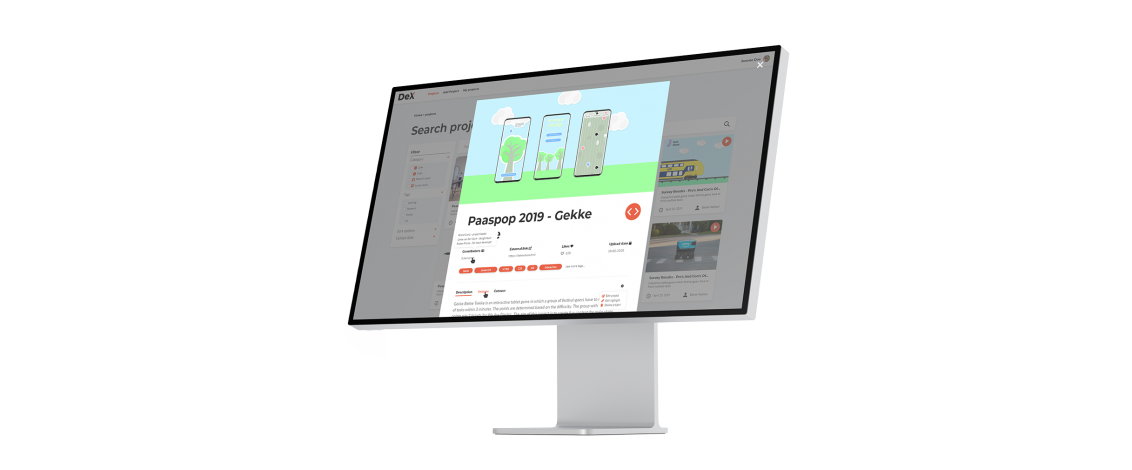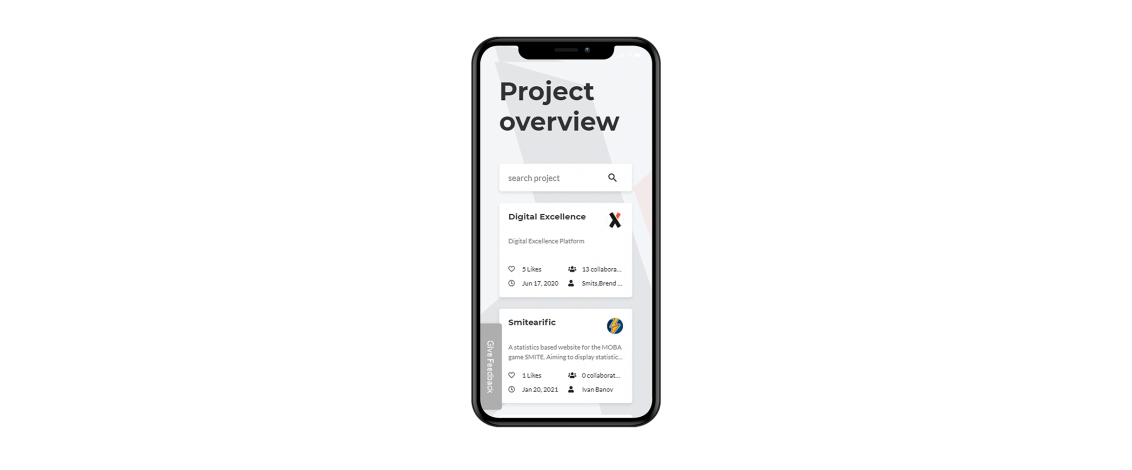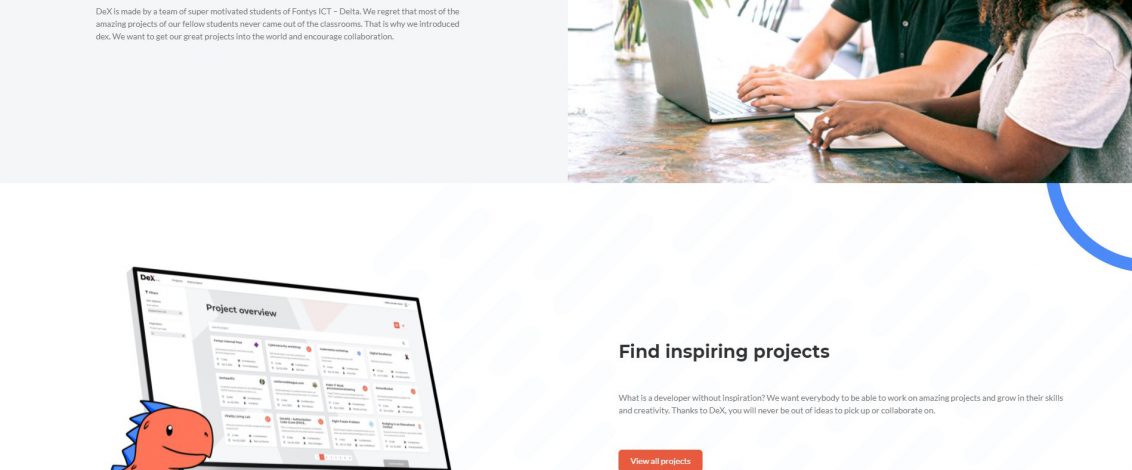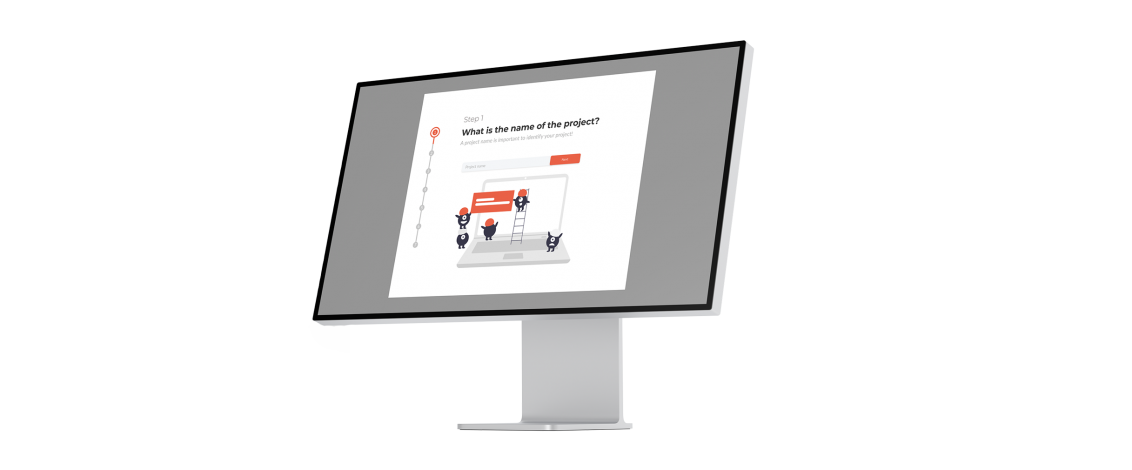Digital Excellence Platform

CLIENT
Fontys
A lot of employees and students of FHICT create a lot of nice products. As a hobby, for their work or because of a school project. These can be software solutions, small scripts, research papers, thesis but possibly also project ideas and proposals for others to pick up. Unfortunately, most of them remain private and are not known by the majority of the population. The goal of the DeX-platform (short: DeX) is to make all this work more findable and thus improving collaboration.
Built for everyone
DeX.software
A lot of employees and students of FHICT create a lot of nice products. As a hobby, for their work or because of a school project. These can be software solutions, small scripts, research papers, thesis but possibly also project ideas and proposals for others to pick up. Unfortunately, most of them remain private and are not known by the majority of the population. The goal of the DeX-platform (short: DeX) is to make all this work more findable and thus improving collaboration.
Commonly heard criticism is that “we already have GitLab for this”. This, however, is only one specific source. A content creator can choose to use a different platform for its project. DeX will search for all sources that are linked to the platform. Moreover, GitLab is mostly used in software development. Research papers, for instance, have a different source. We want to find all relevant information and thus search in all available sources, not only GitLab.
The benefits of using DeX will include, but probably not be limited to:
VISIBILITY
Projects that are now only known by a small group of people will be more visible to the whole community. This increases the visibility of innovative solutions as well as their collaborators.
COLLABORATE
People can easily find the collaborators of a project (proposal) and collaborate with them more easily. This creates a sort of open-source community in which all our collaborative ideas are shared.
AGGREGATE
People have a better overview of their own work. This can be useful for instance when maintaining a portfolio or using examples in class, both as a teacher as well as a student. A student can show his or her previous work and maybe even demonstrate certain learning outcomes within that particular semester.
SHOWCASE
Administrators can more easily find good examples of innovative solutions (showcases) that are built by the community. This can then, for instance, be used for promotional use. The interesting projects will be praised by the community and will be identified sooner and more easily. Such projects can then be put on the website of FHICT for instance.
CENTRALIZE
It can be a central place where all project proposals can be gathered. Internships, minors, challenges for certain semesters such as Open Innovation all have their own format and system where employees and students need to work with. This can all potentially be grouped into one system.
SUGGEST
DeX can suggest interesting projects for you as a person, based on interest such as techniques, a certain topic or based on the collaborators which (some of them) you follow and/or share the same interests. This way you will be informed and up-to-date with the latest news and trends.

New platform that uses a modern tech stack for an open source project
The platform was separated in the backend and the frontend. The backend uses .NET Core 3.1 and makes use of other frameworks like IdentityServer 4 to connect with other identity providers such as Fontys or Surf.
The frontend is built in Angular 9 and is set up using a modular architecture.
Both of these projects have full continuous integration set up using Github Actions, with features like automatic code coverage, integrated SonarQube, automatic integration tests using Postman, unit tests, and more! We've also set up automatic deployment by using Github Actions and Docker. Upon pushing to develop, a new version is put online on the staging environment, upon pushing to master, a new production version is pushed. All of this is done automatically, without any manual intervention needed.










